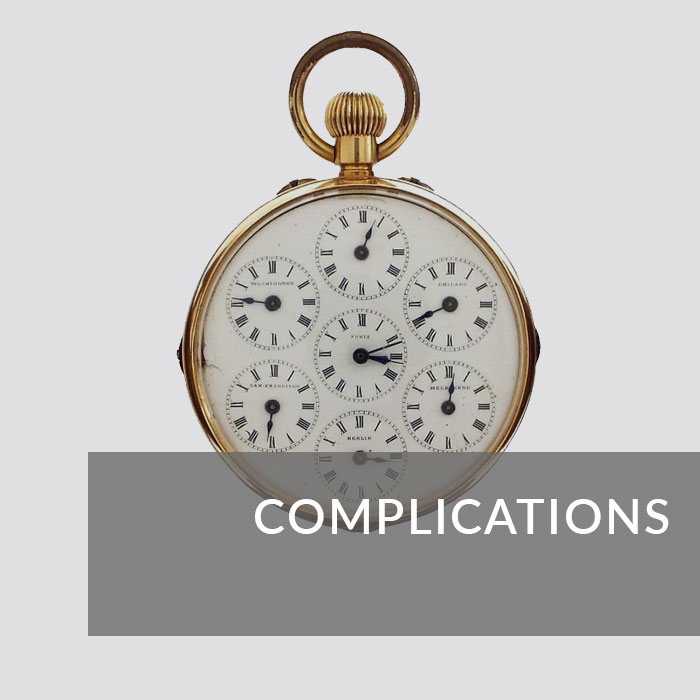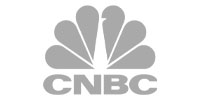Repeating Pocket Watches: History & Valuations
A repeater is a kind of complication found on pocket watches. A ‘repeating’ watch is one that will ‘repeat’ the sounding of the hour, and often shorter intervals, at will when a button is pressed by the user.
Repeaters can sound the time up to the nearest minute, but quarter repeaters are the most common and indicate the hour and quarter hour. There are also five-minute repeaters which sound the time to the nearest five minutes, and minute repeaters that can chime the exact time down to the minute.
Repeater watches were popular in the 17th century when it was common for people to wear pocket watches. The invention of electricity and electric clocks eventually led to a decline in popularity for repeaters, but they have recently seen a resurgence in luxury watchmaking. One of the most notable features of repeater watches is their intricate chiming mechanisms. These movements consist of multiple hammers and gongs that strike different notes to indicate different parts of the time. Each hammer corresponds with a specific hour, quarter hour, or minute, creating a melodic tone when activated.
Find Me A Specialist Pocket Watch Valuer
How To Sell: Auction or Private Sale?
Mark Littler Ltd. are one of the only independent advisers in the antique industry. We offer trusted, independent advice to help you sell your Pocket Watch for the highest possible price.
Selling at an auction might provide your watch with greater exposure. However, with a combined average of 45% in gross buyers’ and sellers’ fees, this approach might prove to be a false economy.
Conversely, finding a private buyer for your pocket watch through our services could net you 33% more than if you sold it via auction, as our fees are only 12%.
What We Do For You
Simply fill in your contact details below and you will get an automatic referral to a leading pocketwatch auction expert who will give you an auction estimate and advise on how to sell with them. We will also see if we are able to get any offer from our private clients.
If we get any offers we will send these within 4 days. All offers are without obligation and there are no fees to pay us if you decide to sell at auction.
Pocket Watch Valuation Tips
To get the most accurate valuation of your pocket watch simply ensure you provide the following information:
- Include the width of the pocket watch across the dial but DO NOT include the winder or bow in this measurement.
- Let us know if the watch is working – just knowing that it ticks when wound is enough.
- How heavy is the watch? While we can value pocket watches simply by looking at the images, if you can let us know the total weight of the watch (in grams) then we can be a lot more accurate.
- PROVENANCE! Who owned the watch before it came to you? Perhaps it was a family member who fought in a war, or a relative who had friends in high places. These stories matter and can impact the value of the watch more than you think.
- Boxes and paperwork. Does the watch have its original box and paperwork? If so let us know as this will make a difference to the valuation.
Expert Pocket Watch Valuation
Use the form below or send images of your pocket watch to be connected with a pocket watch expert.
What Our Customers Say
What To Look For In Your Repeating Pocket Watch

Condition/originality
The condition and originality of a watch has the greatest bearing on its value. What could outwardly appear to be a rare 17th century verge pocket watch, may have had a large proportion of its movement replaced or cannibalised over the years (replacement dial etc). These changes might only be known to a watchmaker or collector so a guarantee of originality will positively impact the value if you are looking to sell.
The outward condition of the watch is easier to assess yourself. Cracks to the dial, worn cases or erased presentation engravings can negatively impact the value of a pocket watch.

Complications
Very broadly speaking, the more complications the greater the value of the watch. Minute repeaters are some of the most sought-after complications as well as: tourbillon, split-seconds chronograph (or rattrapante), chronometers, perpetual calendar and phases of the moon, to name but a few.
If your watch has only the repeating complication then the repeating frequency (hour, quater, minute etc) will impact the value. With rarer repeating frequencies generally more sought after. Quarter repeaters are the most common. The mode of repeating (bell, gong, vibration) will also have an impact.

Case material
With the exception of watches with ‘out of the ordinary’ movements or features (chronometers etc) the case material can have a significant bearing on the value of the watch. Generally speaking 18ct gold pocket watches are more valuable than 9ct gold pocket watches, silver pocket watches and gold or silver plated pocket watches are worth less again.
The most obvious example of this can be seen with gold cased watches: three seemingly identical watches with identical Waltham movements could be several thousand pounds different in value depending on the case material, i.e. gold plated vs. 9ct gold vs. 18ct gold.
As Featured In:

Age
The most expensive pocket watch ever sold at auction was only made in 1933. The price of the Vacheron Constantin Reference 57260 was not released, but it is fair to estimate that it is likely the most expensive pocket watch ever produced, and was only made in 2015.
As such the age of a watch does not necessarily invoke a high value. For example, pair cased silver verge watches from the reign of George III can be sold for as little as £100 at auction (condition dependant) yet an Edwardian minute repeater can easily sell for £1,000+.

Provenance & certificates
Provenance can add a significant amount of value to a watch and sometimes the provenance will be of more value than the watch itself.
A good example of this would be a watch that could be proven to have been on the Titanic; the story attached to the watch is what would be valuable rather than the pocket watch itself.
The original chronometer certificates, receipts, boxes and paperwork can also add significant value to a watch when they are still present.

Manufacturer
In alphabetical order here is a list of some manufacturers that command a significant premium:
- Audemars Piguet
- Breguet
- Harrison
- IWC
- Massey
- Mudge
- Omega
- Patek Phillpe
- Perrelet
- Rolex
- Tiffany
- Tompion
- Vacheron Constantin
- Zenith
The History of Repeating Pocket Watches
The first repeating watches used a bell to strike the hour and were thought to have been developed in parallel by Quare and Barlow between 1685 and 1688. Each produced slightly different designs that performed the same function – a watch that would sound the time at will by sounding a bell to mark the nearest hour.
This addition was a great step forward for watches as it allowed the time to be told in the dark. Previously this had only been possible by feeling for raised pins on the hands. Without the need to touch the face of the watch crystal to protect the face and hands was introduced more widely. This allowed more delicate and intricate designs for the pocket watches of the period.
The repeating function was refined over the following 200 years to allow the time to be sounded at an accuracy of up to a minute – known as minute repeaters. Quarter repeaters, which sounded the hour and the nearest quarter hour were the most common.
In the nineteenth century bells were replaced by gongs, which allowed for a slimmer design that was popular in Europe at the time. Silent repeaters that vibrated or pulsed also became available – useful for deaf or blind people and in situations where a bell or gong going off would be unwelcome.

















